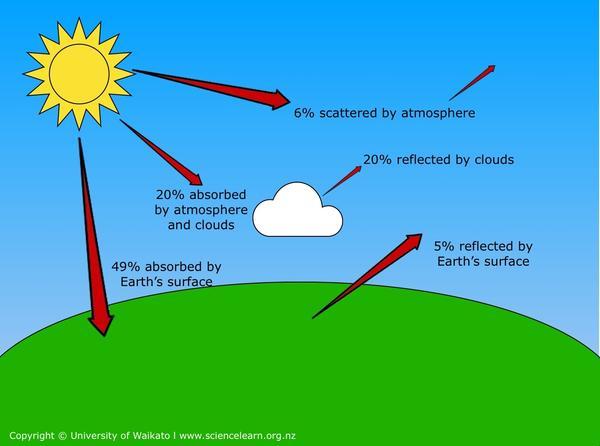The Sun is the ‘powerhouse’ of our Earth, producing an impressive 3.8x1026joules (J) of heat energy per second without interruption. The Sun radiates in all directions with approximately 50% of the incoming solar radiation reaching the Earth. This is called the greenhouse effect. Approximately 30% of the incoming solar radiation is reflected back into space by our atmosphere. This is called the albedo effect.
The Sun’s energy that reaches Earth and passes through the atmosphere is harnessed directly as a heat source or used to generate electricity.
The idea to make use of the Sun’s radiation is not new. People have been taking advantage of this for thousands of years, using the Sun’s heat for a variety of tasks such as cooking their food, heating their water and, of course, heating their homes. Ancient Greek people, for example, learned how to build their houses in order to harness the Sun’s heat.
Over the past fifty years, people have adapted their houses with solar collectors to utilise the incoming solar radiation to heat water and living space. You may have seen homes with solar panels on their roofs. Making use of this energy source can account for up to 40% of your electricity bill, so you can see why some people opt for solar collectors. These collectors can heat water for things such as swimming pools, for general water use or to heat the air inside your house.
In some countries like the United States of America, solar energy is used to heat water in order to generate steam that drives a generator to produce electricity, but New Zealand has no solar power plants.
Photovoltaic (PV) cells
To make electricity from solar energy, we use photoelectric material and expose it to sunlight. Solar cells, also called photovoltaic (PV) cells, have a wafer-thin layer of silicon, which is exposed to the Sun.
A number of these cells wired together make a solar module. Sunlight is made up of photons – essentially, little particles of solar energy. When sunlight strikes a PV cell, some of the photons are absorbed. The photons excite the atoms in the silicon layer.
The atoms split up and the electrons travel down wires into the home for electricity. PV cells operate on the principle that electricity will flow between two different semiconductors when they are put in contact with each other and exposed to light. By linking a number of these cells together, a flow of electricity can be achieved.
Most PV cells are used by homes and small businesses. PV cells are expensive, they require a lot of room and the electricity produced is reliant on lots of sunshine, so they are not practical to use for large industry at this stage. Until technology improves, users must weigh up the benefits of an environmentally friendly power source over the cost.
There are times, though, when the use of PV is extremely useful – remote areas that cannot get electricity in another way benefit from PV. A good example of this is in space – satellites have PV panels that can be orientated towards the Sun, allowing the satellites to generate their own power.
In New Zealand, we have, on average, 2,000 hours of bright sunshine per year. It is estimated that, if every home covered their roofs in PV cells, around 25% of the country’s electricity needs could be generated.
Related content
Find out more about using solar energy.
See our range of resources Harnessing the Sun in our introductory article.
Explore other renewable forms of energy.
Activity ideas
Students can explore the transformation to heat energy through these hands-on activities Using heat energy, Exploring solar power and Making a solar oven.
The activity Māui and the Sun uses the Māori legend to introduce the concept of harnessing the Sun as solar energy.
Additional teacher resources include Alternative conceptions about energy and a unit plan.
Useful links
This 2022 RNZ article and audio from the Our Changing World series looks at Sunshine science: the power and peril of the sun’s rays.
The New Zealand Energy Efficiency and Conservation Authority (EECA) focuses on energy efficiency and the use of renewable energy sources.
Gen Less is a government agency dedicated to mobilising New Zealanders to be world leaders in clean and clever energy use, explore how business can run more sustainably with renewable energy.
MBIE is responsible for maintaining data on New Zealand’s generation stack. This is a list containing information on the costs of existing and new electricity generation plants in New Zealand, it includes reports on geothermal, hydro, thermal, solar and wind power.
SolarPower.guide has concise information about solar cooking, solar cooker design types and links to recipes and cooking tips.



